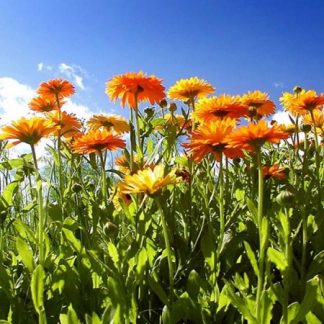Description
Lamiaceae (family name)
Forage for Pollinators: Produces Nectar in abundance for Long and Short-tongued Bumblebees, Honeybees and Solitary bees. If grown field-scale it produces honey surplus. The flowers are pollinated by Bees and Butterflies.
Flowering time: August-September.
Growing information: PERENNIAL HERB naturalised in the British Isles growing to 0.6 m (2ft) by 1 m (3ft 3in). Suits heavy or damp soil, with a preferred pH of 7-8, and can tolerate acid soils. Hardy to minus 30ºC. ‘Garden mint’ edible raw or cooked with myriad uses from tea to sweets, and traditionally used as an aid to good digestion. Provides bees with important, strongly antiseptic oil which may help the colony defend the hive from foreign invaders such as insects and mice which hate the oil. If it grows too enthusiastically, it is easily kept in check by pulling up excess plants. Noted for attracting wildlife.





